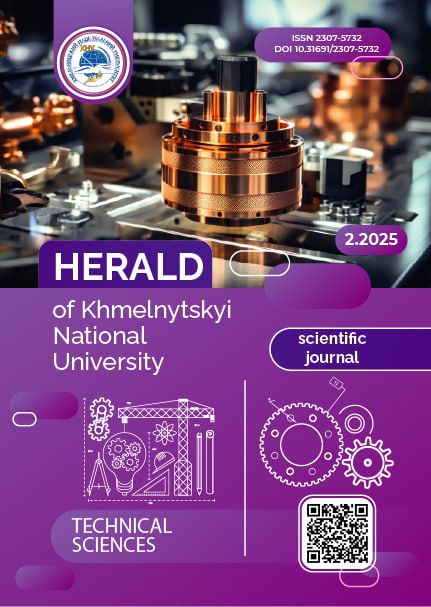USE OF MODIFIED MINERAL SORBENT FOR CELLULOSE MEMBRANE OPERATION
DOI:
https://doi.org/10.31891/2307-5732-2025-349-62Keywords:
bentonite, organosolvent cellulose, thermal treatment, acid modification, selectivity, productivityAbstract
The article examines the prospects of using modified bentonite as a sorption material in cellulose membranes for water purification. Thermal and acid modification of natural bentonite was conducted to improve its adsorption properties. IR spectroscopy methods were used to analyze the structural changes in bentonite after the modification process. Changes in the intensity of functional groups were observed, indicating partial destruction of the crystal lattice. Analysis of adsorbent material fixation showed that the material is actively retained on the surface of cellulose fibers. The cellulose membranes were manufactured using miscanthus cellulose obtained through oxidative-organosolvent delignification of plant raw material stems. The cellulose was modified with an aminating mixture containing epichlorohydrin : triethanolamine in a 1:1 ratio. The impact of using natural and modified bentonite on cellulose membrane performance was demonstrated. The sorption properties and productivity of the obtained membranes were evaluated during the filtration of model solutions of sodium humate and kaolin. It was established that membranes made from modified miscanthus fiber with internal filler addition showed improved residual permeate color indicators compared to material made from conventional modified oxidative-organosolvent cellulose. Specifically, when using modified cellulose with the addition of natural and calcined bentonite, the residual color of the model solution was 528.15 and 480.2 degrees, respectively, which is 4.6% and 13.3% more effective. Conversely, using acid-modified bentonite as a filler in membrane manufacturing deteriorates permeate quality due to the formation of a porous material structure and particle deposition on the fiber surface, which inhibits sorption. The obtained results demonstrate the potential for applying modified cellulose membranes in water treatment technologies.
Downloads
Published
Issue
Section
License
Copyright (c) 2025 ІРИНА ТРЕМБУС, АННА ГАПОНЮК (Автор)

This work is licensed under a Creative Commons Attribution 4.0 International License.

